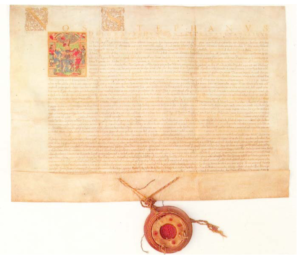Prince Bocskai had his Hajdús settled on 12/12/1605, and the COA of the “Green Riflemen” (1648)



More Hajdú soldiers were settled during 1606, which was the time when the towns of Kölesér, Szalonta, and Szoboszló were born. You can read about Szoboszló here:
https://www.hungarianottomanwars.com/kingdom-of-hungary/hajduszoboszlo/



You can read the following detail in the document issued on 12 December 1605:
“For the purpose that our warriors should not struggle away from their indefinite dwelling places and prevent them from getting under foreign authority, we are granting them the entire town of Kálló which belongs to our castle of Tokaj in Szabolcs County, and similarly, our domains and fields at Nánás, Dorog, Varjas as well as our properties that we partially own, namely Hadház, Vámospércs, Sima, and Vid, together with their all profits and benefits. It is all done for the reason that they should live in a determined location, and according to the customs and habits of our faithful Székely people in Transylvania, they together could be always in readiness to provide even more useful and successful service for the benefit of Hungary and Transylvania.”
You can read more about the Székely border warriors of Transylvania and compare them to the Hajdú soldiers:
https://www.hungarianottomanwars.com/essays/who-were-the-szekelys/
“Green Riflemen” COA from Transylvania



(Sources: Szibler Gábor, TEUS. Transilvania Noastră – Erdélyünk – Unser Siebenbürgen, and Szántai Gábor)
Dear Readers, I can only make this content available through small donations or by selling my books or T-shirts.
If you like my writings, please feel free to support me with a coffee here:
You can check out my books on Amazon or Draft2Digital, they are available in hardcover, paperback, or ebook:
https://www.amazon.com/dp/198020490X
or at https://books2read.com/b/boYd81


My work can also be followed and supported on Patreon: Become a Patron!http://Become a Patron!


https://hungarianottomanwars.myspreadshop.com/

https://hungarianottomanwars.myspreadshop.com/all



